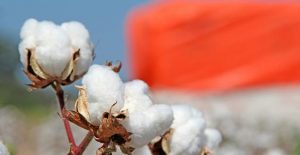Morning report: Corn, wheat inch up slightly, though a strong dollar holds back further gains. (Comments are updated by 7:30 a.m. Central Time.)
Corn mixed
Soybeans up 5-11 cents; Soymeal up $9.30/ton; Soyoil down $0.14/lb
Chicago wheat up 1-2 cents; Kansas City wheat up 1-2 cents; Minneapolis wheat up 1-2 cents
*Prices as of 6:55am CDT.
Feedback from the Field updates! How does your farm’s crop conditions stack up against other farms around the country? Click this link to take the survey and share updates about your farm’s crop development. I review and upload results daily to the FFTF Google MyMap, so farmers can see others’ responses from across the country – or even across the county!
My latest FFTF column was published last Tuesday! The majority of farmer insights came from growers who are struggling with lackluster crop conditions. Persistent dryness, lack of rainfall, and spring planting delays are the key culprits and yield downgrades are expected.
Corn
Corn prices were mixed this morning, with old crop futures trading up $0.01-$0.02/bushel while new crop futures fell $0.01-$0.02/bushel lower at last glance. The mixed messages were due in large part to late week forecasts that are calling for showers across the Midwest. Despite what appeared to be a minor recovery in the energy markets, corn’s gains this morning were limited by shipping paces in Ukraine and a strengthening dollar.
Crop tours across the Midwest this week will likely result in updated yield forecasts that will cause some market movement over the next few days. Corn yields are likely largely locked in at this point, though the slow start to the season means that the latest readings are likely to have stronger impacts on soybean prices.
August 1 cattle on feed inventories were reported on Friday afternoon by USDA-NASS at 11.22 million head, up 1.4% from the previous year’s volumes. Pre-report trade estimates placed August 1 cattle on feed inventories at 11.23 million head, with an expected range of 11.15 million – 11.27 million head.
It trailed 2020’s August reading of 11.28 million head as the second largest August volume since USDA began reporting cattle on feed metrics in 1996. The report is a little deceptive for corn growers, especially since high feed costs, drought damage to pastures, and unrelenting consumer demand continue to paint a bullish picture for beef prices.
To that end, placement volumes grew nearly 2% higher than a year ago in July 2022 to 1.77 million head (expected: 1.63 million – 1.74 million head with an average guess of 1.71 million head). Sales for slaughter during July 2022 registered at 1.83 million head, down nearly 4% from last year (pre-report average guess: 1.85 million head) as summer barbeque season begins to wind down, but still at a steady marketings pace by historical standards.
But cattle weights are drifting lower as the animals arrive at processing plants. And even with the rapid consumer beef demand, it’s increasingly clear that the U.S. cattle supply is beginning to show long-term signs of tightening.
Feed consumption by livestock typically accounts for the largest end user of U.S. corn. In the 2021/22 marketing year, feed usage consumed 37% of last year’s corn crop. This year, it is expected to use 37.1% of a smaller 2022 corn harvest.
USDA issued further cuts to 2022/23 feed and residual corn usage rates in the August World Agricultural Supply and Demand Estimates (WASDE) report. At 5.325 billion bushels, 2022/23 feed and residual consumption will be nearly 5% lower than a year ago and is expected to have the lowest annual volume since the 2017/18 marketing year.
But most notably, ethanol usage is expected to consume 0.3% more of the 2022 corn crop over the next 12.5 months to become the largest end user of U.S. corn. The last time ethanol consumption outpaced livestock usage for corn was during the 2017/18 marketing year.
As corn growers shop for cash bids ahead of harvest, this dynamic will be important to remember. While cattle feeders may be more willing to pay up front for freshly harvested corn, ethanol end users could also offer strong price competition for fall corn stocks. But if the cattle market’s liquidation cycle intensifies, it could awaken the bears from hibernation in the corn market.
Soybeans
Soybeans traded $0.05-$0.12/bushel higher this morning, gaining strength from clear skies forecasted across the Midwest over the next few days. The gains were limited by showers expected later in the week in the region. Demand optimism was also a factor, thanks to favorable soybean export data reported late last week.
Soybean condition ratings will likely be the most top-watched item in today’s Crop Progress report. Temperatures in the Upper Midwest moderated towards the cooler side of the historical averages last week while the region enjoyed showers over the second half of last week.
That bodes favorably for ratings, especially as the crop finishes filling pods. Last week’s report saw USDA drop another percentage point from soybean condition ratings through the week ending August 14 to land at 58% good to excellent. The reading was in line with analyst estimates leading up to the report’s release last Monday afternoon.
Will USDA greet the sentiment with the same optimism in today’s report for soybeans? Stay tuned!
Wheat
Even with a stronger dollar overnight, wheat prices still clawed out a $0.01-$0.02/bushel gain this morning. Much of the uptick is due to wheat prices hitting six-month lows late last week and bargain buyers circling the wheat complex in hopes of snapping up a good deal. Gains were limited by the dollar’s firmness and shipping paces out of Ukrainian Black Sea port facilities.
U.S. Wheat Associates published their weekly Harvest Report on Friday. Here are some of the top insights as the market preps for today’s Crop Progress report, to be published this afternoon by USDA-NASS.
Hard red winter wheat harvest is running behind last year’s paces – now expected at over 85% complete – but is largely aligned to the five-year average. Harvest progress continues to lag behind last year’s paces due to the slow spring and some shower activity.
Drought pressure continues to plague ratings for the HRW crop in Montana, though the dry weather bodes well for harvest progress this week. Only a few fields in South Dakota are left standing but will likely be harvested in the next week or so. Quality data is finding high protein, low moisture, and slightly lower test weights in this year’s HRW crop – due largely to drought pressures.
Warm and dry conditions will continue again this week across much of the Plains. Farmers further south are beginning to gear up to seed the 2023 crop, so the dry soil and weather conditions will likely create challenges for planting prospects, though it bodes favorably for harvest progress to the north and west.
Soft white winter wheat harvest progress is 28% complete in Oregon, 28% done in Idaho, and 45% finished in Washington as of late last week. Spring white wheat crops in Idaho and Washington both stood at 14% harvested at that time. Crops at higher elevations will not likely be harvested until September. Harvest progress in the Pacific Northwest was slowed last week after rain showers and some hail and wind activity kept farmers out of the fields.
But the storm damage was minimal, and the soft white crop remains in good condition. Clear skies should keep combines rolling this week. The crops currently being harvested are reporting better quality data than crops harvested earlier that faced heat stress. Protein levels are low, but test weights are trending higher.
Hard red spring wheat harvest was 16% complete as of late last week. South Dakota has seen the largest margin of harvest progress so far (72% complete) with Montana (26%), Minnesota (12%), and North Dakota (5%) following. The slow spring means that crops in top producer North Dakota are still two to three weeks from final maturity.
Condition ratings dropped in last week’s Crop Progress report for spring wheat due to dry weather. Temperatures were more moderate last week, but skies were mostly dry until the latter half of the week. Much of the crop’s damage remains centered in Montana’s Gold Triangle region.
The cooler temperatures should continue this week in the Northern Plains. Skies are expected to remain mostly clear, which bodes well for crop maturation and harvest rates.
Similarly, the conditions this week should help durum harvest progress. Around 15% of the crop had been harvested as of late last week, but progress remains slowed due to delayed maturation rates. Condition ratings continue to be strong.
Weather
Temperatures across the Heartland are likely to trend warmer today relative to last week’s moderate mercury readings, according to NOAA’s short-range forecasts. The Plains will see temperatures rise into the 90s-100s while the Mississippi River Valley and the area east of it is more likely to experience temperatures in the 80s-90s today.
Clear skies are ahead for the Heartland today, though the Northern Plains should see a chance of showers late this evening into early tomorrow morning. Showers are going to continue to line the Southern Plains and Southeast over the next couple days, which should help the region combat excessive heat during that time.
Above average heat is beginning to move out of the Corn Belt in the 8-14 day NOAA outlook. Dry conditions will likely persist in the Upper Midwest during that time, though the Southern Plains and Eastern Corn Belt could have a good chance at showers.
The 6-10-day NOAA outlook forecasts the last heat wave of the summer for the Northern Plains and Upper Midwest through the end of August. Chances for showers for the Central and Southern Plains and Eastern Corn Belt are above average during that time, which bodes favorably for winter wheat seeding.
Financials
S&P 500 futures tumbled 1.10% lower to $4,185 this morning as traders grow increasingly concerned about additional (and aggressive) interest rate hikes from the Federal Reserve as inflationary pressures persist across the globe.
The Federal Reserve is holding its annual economic outlook in Jackson Hole, Wyoming this week, where more insights about the Fed’s outlook on the economy will likely be revealed.
“Futures bets show traders are split as to whether the central bank will raise interest rates by a half percentage point or three-quarter percentage point at its September meeting,” Caitlin Ostroff wrote for the Wall Street Journal this morning. “Aggressive increases could cause businesses and consumers to cut back on spending, potentially hurting corporate earnings and economic growth.”
“Jackson Hole is something the market is starting to get nervous about,” Hani Redha, a portfolio manager at PineBridge Investments, told the WSJ this morning.
What else I’m reading this morning on our website, FarmFutures.com:
My latest E-corn-omics column explains why soybean exports are looking so much better than corn exports in the upcoming 2022/23 marketing year.
Commstock’s Matthew Kruse previews Brazilian soybean planting, noting that another La Ni?a cycle and low fertility could pose yield risks for what is forecasted to be another record-breaking Brazilian soybean crop.
Harvest prep is underway in Indiana, reports Between the Fencerows columnist and Indiana farmer Kyle Stackhouse.
AgMarket.Net’s Bill Biedermann weighs the chances of another bullish run in the corn market.
My recent E-corn-omics column highlights wheat export optimism.
Morning Ag Commodity Prices – 8/22/2022
Contract
Units
High
Low
Last
Net Change
% Change
SEP ’22 CORN
$ / BSH
6.285
6.185
6.28
0.02
0.32%
DEC ’22 CORN
$ / BSH
6.24
6.15
6.2375
0.005
0.08%
MAR ’23 CORN
$ / BSH
6.3075
6.2225
6.3025
-0.0025
-0.04%
MAY ’23 CORN
$ / BSH
6.3275
6.255
6.32
-0.0125
-0.20%
JUL ’23 CORN
$ / BSH
6.3075
6.2275
6.3075
0
0.00%
SEP ’23 CORN
$ / BSH
5.9875
5.91
5.975
-0.0175
-0.29%
DEC ’23 CORN
$ / BSH
5.91
5.8325
5.9
-0.0025
-0.04%
AR2 ’24 CORN
$ / BSH
5.9825
5.98
5.98
0.0025
0.04%
MAY ’24 CORN
$ / BSH
0
#N/A
6.01
0
0.00%
SEP ’22 SOYBEANS
$ / BSH
15
14.78
14.9975
0.11
0.74%
NOV ’22 SOYBEANS
$ / BSH
14.1375
13.93
14.1325
0.0925
0.66%
JAN ’23 SOYBEANS
$ / BSH
14.2025
13.9975
14.1975
0.09
0.64%
MAR ’23 SOYBEANS
$ / BSH
14.2325
14.035
14.225
0.09
0.64%
MAY ’23 SOYBEANS
$ / BSH
14.2525
14.055
14.225
0.0675
0.48%
JUL ’23 SOYBEANS
$ / BSH
14.245
14.0525
14.245
0.0975
0.69%
AUG ’23 SOYBEANS
$ / BSH
14.0625
14.0275
14.0625
0.1075
0.77%
SEP ’23 SOYBEANS
$ / BSH
13.6125
13.6125
13.6125
0.045
0.33%
NOV ’23 SOYBEANS
$ / BSH
13.49
13.3225
13.4775
0.0675
0.50%
AN2 ’24 SOYBEANS
$ / BSH
0
#N/A
13.4425
0
0.00%
AR2 ’24 SOYBEANS
$ / BSH
0
#N/A
13.3725
0
0.00%
SEP ’22 SOYBEAN OIL
$ / LB
68.37
67.41
67.77
-0.13
-0.19%
OCT ’22 SOYBEAN OIL
$ / LB
66.79
65.83
66.14
-0.18
-0.27%
SEP ’22 SOY MEAL
$ / TON
458.6
445.3
458.6
9.9
2.21%
OCT ’22 SOY MEAL
$ / TON
416.8
405.3
416.5
8.5
2.08%
DEC ’22 SOY MEAL
$ / TON
410.7
399.4
410.4
8.1
2.01%
JAN ’23 SOY MEAL
$ / TON
406.1
395.7
406.1
7.9
1.98%
MAR ’23 SOY MEAL
$ / TON
397.5
389.1
397.5
6.2
1.58%
SEP ’22 Chicago SRW
$ / BSH
7.6125
7.445
7.55
0.0175
0.23%
DEC ’22 Chicago SRW
$ / BSH
7.79
7.625
7.725
0.015
0.19%
MAR ’23 Chicago SRW
$ / BSH
7.9475
7.79
7.8825
0.0075
0.10%
MAY ’23 Chicago SRW
$ / BSH
8.04
7.8875
7.98
0.005
0.06%
JUL ’23 Chicago SRW
$ / BSH
8.04
7.9025
7.995
0.0175
0.22%
SEP ’23 Chicago SRW
$ / BSH
8.075
7.9625
7.99
-0.025
-0.31%
DEC ’23 Chicago SRW
$ / BSH
8.13
8.0225
8.0775
0
0.00%
SEP ’22 Kansas City HRW
$ / BSH
8.5475
8.37
8.475
0.0275
0.33%
DEC ’22 Kansas City HRW
$ / BSH
8.565
8.39
8.485
0.015
0.18%
MAR ’23 Kansas City HRW
$ / BSH
8.565
8.405
8.5
0.025
0.29%
MAY ’23 Kansas City HRW
$ / BSH
8.5525
8.42
8.5075
0.03
0.35%
JUL ’23 Kansas City HRW
$ / BSH
8.49
8.3375
8.405
0.005
0.06%
SEP ’23 Kansas City HRW
$ / BSH
8.425
8.365
8.3725
-0.015
-0.18%
DEC ’23 Kansas City HRW
$ / BSH
8.45
8.3675
8.4125
-0.015
-0.18%
SEP ’22 MLPS Spring Wheat
$ / BSH
8.7875
8.6925
8.7625
0.015
0.17%
DEC ’22 MLPS Spring Wheat
$ / BSH
8.9
8.8125
8.8875
0.0175
0.20%
MAR ’23 MLPS Spring Wheat
$ / BSH
9.01
8.955
8.9625
-0.0375
-0.42%
MAY ’23 MLPS Spring Wheat
$ / BSH
9.085
9.055
9.055
-0.03
-0.33%
JUL ’23 MLPS Spring Wheat
$ / BSH
9.1375
#N/A
9.11
0
0.00%
SEP ’23 MLPS Spring Wheat
$ / BSH
8.915
#N/A
8.9225
0
0.00%
DEC ’23 MLPS Spring Wheat
$ / BSH
0
#N/A
9
0
0.00%
SEP ’21 ICE Dollar Index
$
108.415
108.02
108.335
0.237
0.22%
SE ’21 Light Crude
$ / BBL
91.26
88.9
90.79
0.02
0.02%
OC ’21 Light Crude
$ / BBL
91.03
88.35
90.38
-0.06
-0.07%
SEP ’22 ULS Diesel
$ /U GAL
3.7732
3.6489
3.7597
0.0592
1.60%
OCT ’22 ULS Diesel
$ /U GAL
3.7312
3.6078
3.7181
0.0572
1.56%
SEP ’22 Gasoline
$ /U GAL
3.0175
2.9411
3.007
-0.0105
-0.35%
OCT ’22 Gasoline
$ /U GAL
2.7983
2.7261
2.7836
-0.0053
-0.19%
AUG ’22 Feeder Cattle
$ / CWT
0
#N/A
181.5
0
0.00%
SEP ’22 Feeder Cattle
$ / CWT
0
#N/A
184.75
0
0.00%
AU ’21 Live Cattle
$ / CWT
0
#N/A
141.6
0
0.00%
CT2 ’21 Live Cattle
$ / CWT
0
#N/A
145.25
0
0.00%
OCT ’22 Live Hogs
$ / CWT
0
#N/A
93.125
0
0.00%
DEC ’22 Live Hogs
$ / CWT
0
#N/A
84.15
0
0.00%
AUG ’22 Class III Milk
$ / CWT
20.07
20.07
20.07
-0.01
-0.05%
SEP ’22 Class III Milk
$ / CWT
19.68
19.66
19.66
-0.07
-0.35%
OCT ’22 Class III Milk
$ / CWT
19.8
19.8
19.8
-0.2
-1.00%
Get our top content delivered right to your inbox. Subscribe to our morning and afternoon newsletters!





